25 Strong Boys in MG/YA Literature (plus 5 Strong Girl-Boy Partnerships) by Lesley Roessing
Everyone needs to recognize themselves and see their lives reflected in books to realize that they are not alone and their problems are not unique. Readers also see story and characters’ decisions as maps to help them navigate life. Just as important are books that cause readers to experience the lives of those they may see as ”others” in order to develop empathy and respect for their peers and to catch glimpses into the lives of children they may not personally encounter. The value of books, such as those listed and reviewed, is to generate important conversations; adolescents will more willingly discuss characters and how characters handle, or mishandle, conflicts and personal issues than discuss themselves, their difficulties and concerns, and their actions and decisions. In this way books can also serve as bibliotherapy.
In alphabetical order by the title of their stories are 25 strong boys from MG/YA literature, written in prose, graphics, and verse at a variety of reading and interest levels, featuring diverse characters and authors and an array of challenges. These are not all newly-published novels, but they are ones that I have read and reviewed in the last two years.
Following these, I have also included 5 novels which feature strong boys and girls who face challenges together.
Strong Boys in MG/YA Literature
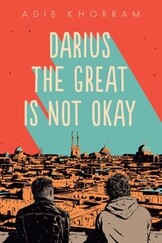
“I had never been surrounded by my family before. Not really.
“I loved them.
“I loved how their eyelashes were long and dark and distinct, just like mine. And how their noses curved around a little bump in the middle, just like mine. And how their hair cow-licked in three separate places, just like mine.”(174)
Darius Kellner just didn’t fit in.
He was a Fractional Persian who was a little overweight from his medicines for clinical depression. He didn’t fit in in school where he was one of two Persian students, Javaneh being a True Persian. He didn’t fit in at school where he was bullied by Trent and his Soulless Minions of Orthodoxy. He didn't fit in at work at Tea Haven where they steeped every tea to a full boil, despite the advice of Darius who knew teas. And he didn’t fit in his family: with his mother, a True Persian; and his father, the Ubermensch, a handsome blonde American with Aryan looks; and his little sister, Laleh, who was also a Fractional Persian but was popular at school and spoke fluent Farsi with her Persian relatives and friends.
But when Darius and his family go to Iran to visit his grandmother and dying grandfather, Darius becomes Darioush and is enveloped by his extended family and the Persian culture. There he makes a new best friend, plays “soccer/non-American football,” finding that he is actually good at the sport, and he learns more about his father. “I finally managed to open up the well inside me.”(299) But the most important lesson he learns is that Darius the Great is not okay, and that is okay.
Through Darius’ story, YA readers will learn quite a lot about the Persian culture and how it feels to stand with one foot in two worlds.
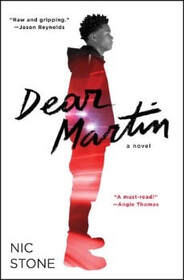
Justyce always thought that if he studied hard and stayed out of trouble, he, a black teen from a marginal neighborhood, would do fine and be treated equally. Justyce is a full-scholarship senior at a college preparatory boarding school, captain of the debate team, and has received his acceptance to Yale. Then, helping a drunk ex-girlfriend, who is bi-racial with very light skin, into the back of a car, a white cop slams him around, cuffs him, and takes him to jail. This experience completely challenges his concept of racial equality in America, and Justyce begins writing letters to Martin Luther King, trying to figure out what Martin would do.
When students debate equality in class, Justyce learns that his cousin Manny’s rich white school friends insist that there is equality even as they disrespect him and challenge his college acceptance as affirmative action. Taking his side is his Jewish debate partner, Sara Jane; Justyce realizes that they have some things in common and falls for her even though he knows his mother will never accept an interracial relationship.
Things escalate, and Justyce loses his sense of where he stands in the world. “Every time I turn on the news and see another black person gunned down, I’m reminded that people look at me and see a threat instead of a human being” (p.95). Manny and Justyce are gunned down by a white, off-duty police officer, and after the trial, Justyce is left even more hopeless “Martin…it never ends, does it?” (p.201), but he does admit, “And maybe that’s my problem. I haven’t really figured out who I am or what I believe yet…, but knowing you [Martin] were my age [when he wrote to the editor of the Atlanta Constitution] gives me hope that maybe I’ve got some time to figure things out”” (p.202).
This is certainly another novel that will generate important conversations among readers, and would work well in books clubs centered around social justice issues, combined with All American Boys, The Hate U Give, Long Way Down, Yummy, and How It Went Down.
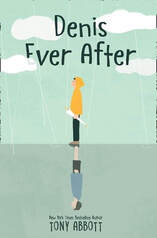
“So. I made a difference.” (132)
Denis died when he was 7 years old. It is now five years later, and he is with his great-grandmother GeeGee in Port Haven where the dead go to forget their lives—backwards, helped by those on Earth who begin forgetting them, until they “fade peacefully.” Usually the dead remain the age they were when they died, but Denis was a twin and since Matt, his brother, imagines them still doing things together, he has aged along with Matt.
Denis died under mysterious circumstances. He was kidnapped and found three days later, halfway across the state from his home, placed on the Georgia memorial on the Gettysburg battlefield. Was he murdered? By whom? How? And where? As twelve-year-old Matt and his friend Trey begin to investigate, Denis feels he must come back as a ghost and help them. What follows is a story of loss, broken families (both that of Denis and Matt, their father and two brothers, and the family who becomes involved in the kidnapping), the effects of war, redemption, and bonds. Russell, the scribe of Port Haven, says that “there are bonds between all of us, the living and the not.” (7) Denis risked a lot to create those bonds and make a difference.
“A thousand thousand threads! Patterns woven and repeated, subtly or accidentally, over the years. One thing I’ve figured out, though. Those threads aren’t just lines connecting and reconnecting. They’re more like arteries, pumping life from one thing to another, creating not simply patterns in a fabric, but a living connection from person to person to thing.” (303) Matt’s reflection describes Tony Abbott’s well-crafted complex tale. At first, I thought the author would never be able to pull all the events together; however, like arteries in a body, they each served to nourish each other. Teachers and parents have expressed concern about finding books for our more advanced young adolescent readers; in many YA novels, the themes, events, and language are not appropriate for 9 to 13-year-olds. Denis Ever After is a complex book appropriate for young readers and, given that the vocabulary is not particularly advanced, it will also appeal to readers who are interested in an intricate mystery.
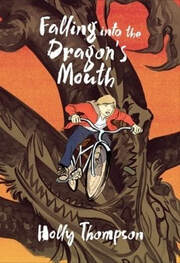
Over seventy percent of young people say they have encountered bullying in their schools—as victim, offender or bystander. The Centers for Disease Control and Department of Education defined bullying as “unwanted, aggressive behavior that involves a real or perceived power imbalance and is repeated or has a high likelihood of repetition.” But bullying is not a problem only in the United States.
As Holly Thompson so powerfully and effectively portrayed female bullying—bullying by exclusion, spreading rumors, and meanness ("mean girls")—in her verse novel Orchards, she portrays the more physical and verbal abusive bullying of males in Falling into the Dragon’s Mouth.
Jason Parker is a fifth-grade American boy living and attending school in Japan where he is different—and bullied for being different. He has redefined “friend” as anyone who doesn’t punch or kick him or refer to him as a “stinking foreigner.” Near the end of the school year, Jason is placed in a group, or han, with five of the meanest kids in the class. What follows is relentless bullying, and the reader sees the importance of telling an adult, but not just any adult. The teacher has to be aware of what is going on, and Jason is afraid that his parents will make it worse. He is hoping to last until his parents can afford to send him to the international school.
With the support of his little sister, two new friends outside school—an older man with Parkinson’s disease and a teen who quit school because of the bullying, his English group, and aikido, Jason perseveres until the bullies “play” the choking game and Jason’s parents and the school finally become involved. Jason’s aikido instructor explains “…we need to train so that we sense danger in order to avoid it” but also warns him “the world is full of all kinds of people and some of them are a bit lost” (308-309).
In short lyrical free-verse lines, readers learn about Japanese culture but also the trials of being perceived as different in any culture. Readers will experience the effects of bullying on children and the importance of effectively stopping and preventing bullying, but they will also become aware of the dilemmas involved with trying to end bullying. I found myself frustrated that Jason did not tell his parents, but then I am an adult. I also was disturbed that his teacher ignored all the signs, but I have learned that this is too often true. In fact, Jason wants to change the rule in his school that allows teachers to hit students.
An effective study of bullying would be for a class to either read both Orchards and Falling into the Dragon’s Mouth to gain different perspectives and begin conversations about different types of bullying, or for half the class to read one of the novels, or to combine these novels with other books on bullying that I reviewed in “Books to Begin Conversations about Bullying. Part 1 (http://www.yawednesday.com/blog/books-to-begin-conversations-about-bullying-by-lesley-roessing) and Part 2 (http://www.yawednesday.com/blog/books-to-begin-conversations-about-bullying-part-2-by-lesley-roessing).
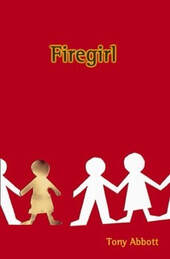
When I taught middle school, I told my students that this was these were years (7th-8th grade) that they would decide who they would become, not what they would become (that would happen in high school), the type of person they would become. Many adults don’t remember just how confusing and challenging adolescence can be—adolescents have friends who are BFFs one day and frenemies another; some hang out with “friends” they don’t even like, just to have a friend or to seem popular; and even through most know right from wrong, sometimes “right” is just so hard to do. Hormones are “raging” and take over brains. And there is always the worry of judgment and censure from others. Author Tony Abbott remembers and designs Tom, the protagonist of Firegirl, with all these challenges and insecurities.
Seventh grader Tom, who, as his mother says needs to “get out there,” has a fairly predictable life. He goes to a Catholic school where he is quiet and most kids ignore him; he has fantasies about saving the life of a grateful Courtney, the prettiest girl in the class; and he hangs out daily with Jeff, a friend who is a little strange, has an unhappy home life, and may not be very truthful or nice but just might help Tom impress Courtney.
Then Tom’s world and values change when Jessica Feeney, a girl who has been badly burned in an accident, joins their class. While many of their classmates ignore Jessica or spread rumors about her, Tom begins seeing her as the person she is even though he is “afraid” of her “The way you look…it scares me.” (134) They strike up a friendship—to a degree—although, as Tom admits, “I never talk to you where anybody can see me…” (135), but hard is it is for him, he wants to do what is right, although it is realistically a slow transition. “It suddenly seemed like the hardest thing in the world to go over there.” (129)
The story shows the how one seventh grader decides the person he will become. As Tom says, “On the outside it doesn’t look like very much happened” (144), and he is not sure that this experience has made him a better person, but he is a changed person and “I’d want to tell her thank you.” (145).
Firegirl is a novel I missed reading when published in 2006, but when I saw that Tony Abbott has written a new novel, The Great Jeff [see below], which focuses on the character Jeff from Firegirl, I decided to read the earlier novel and am so glad I did. Tom’s voice took me in from the first page and led me through a pivotal three weeks in his adolescent life.
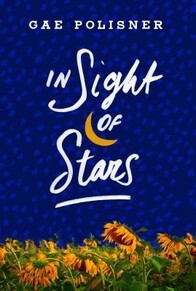
Researchers at Johns Hopkins Children’s Center found that “children who lost a parent due to suicide when they were teenagers or young adults had the highest chance of being hospitalized for a suicide attempt in the first 2 years after the parental suicide.” This highlights the vital importance of providing support to children who are grieving.
Klee’s father committed suicide, and Klee was the one who found him. If that weren’t traumatic enough, his mother moves Klee away from his friends and Manhattan for a senior year in a new high school in the suburbs, away from the museums, art, and parks he loves—the museums, art, and parks where he spent time listening to his father’s stories about Van Gogh and life—and from his friends.
Klee looks for support in Sarah, his one new friend, but he may be demanding more than she can give. When she disappoints him, he cuts himself with a knife and ends up in a psychiatric hospital.
The reader lives through Klee’s hospitalization with him; as does he, we wonder what is real, what is imagined. Who can he trust? He already found that he cannot trust his perfect mother, or can he? Who is real, and whom does he fabricate. How much like his favorite artist, Van Gogh, is he?
Gae Polisner creates a perfect puzzle. I was reminded of the sliding puzzles I played with in childhood. In sliding puzzles, there always is a piece missing. And Klee finds he does have a piece of the puzzle that is missing and, when he finds it, he may be able to build the picture and trust again.
Once started, I literally could not put this novel down. (Picture me frowning at the doctor for taking me on time for my appointment.) The story is skillfully crafted, as each piece slides into the opening left by the movement of another piece. The characters—Klee, Dr. Alvarez, Sister Agnes Teresa, Martin, Sarah, and even Klee’s mother—are well-developed and are integral parts of the puzzle. There is a transcendental or ethereal quality that reminds me of A.S King’s Still Life with Tornado. There are so many pathways and levels offered by this novel that I know I will read it many more times.
“…the sight of stars is always right there. Right in your line of vision. Even on the cloudiest day.”
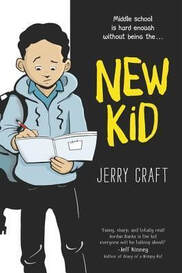
Jordan leaves his neighborhood each day to attend seventh grade at Riverdale Academy Day School (although he would rather go to an art school), a school that is not as diverse as he would like and he is not sure he will fit in. On the otherhand, he is beginning to not fit in with his neighborhood friends, who start calling him “Private School.”
As one of the new kids at school, he has a guide, Liam, who is white, lives in a mansion, wears salmon shirts, is a third-generation RAD student—the auditorium is named after his family.Liam constantly says, “Just don’t judge me” which is confusing to Jordan.
As Jordan becomes friends with Liam and some of the other kids, he realizes that everyone—teachers and students alike—judges each other, expecting them to fit stereotypes—Alexandra, the Weird Girl; Ashley, the Gossip Girl; Drew, the Troublemaker; Andy, the Bully; Ramon, the Mexican (who is actually Nicaraguan). Even Jordan feels his art teacher is not a real artist because she paints abstract art until she explains “I choose to do it to free up my creativity…to break boundaries.” (222)
Jordan is shocked when Liam admits, “I just don’t feel like there’s anyone who’s like me at this school. I always feel so different.” And then continues, “Well, it’s better now. You and Drew are regular people.” (151) As the school year ends, Jordan admits to his parents, “You know, I feel kinda like a new kid.” (245)
A graphic novel that will appeal to readers grades 5-9, the drawings add nuance to the story. And the reader gains another entry into Jordan’s life and thoughts through his black/white sketch book.
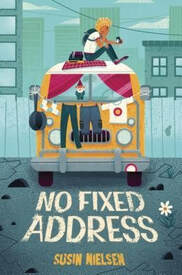
Felix Fredrik Knutsson is 12-3/4 years old and has to determine ways to navigate life. “Astrid and Daniel were great people…but they were not great parents." (176)
I loved the main character, Felix, and also his two friends Dylan and Winnie. This novel, which takes place in Vancouver, highlights a very important crisis, in both the United States and Canada—homelessness.
What I most appreciated in the novel was the resilience and resourcefulness of Felix and the support of his friends. Also the novel illustrates many of the challenges experienced by homeless families to maintain the veneer of normalcy and to stay together. The novel paints a realistic picture of many of the over 1.3 million homeless students in the United States and in Canada, the novel’s setting, where an estimated 235,000 Canadians experience homelessness each year, one of the fastest growing demographics of the homeless population being children and families.
Therefore, this story, or stories like this [see former guest blog “Hiding in Pain Sight: A Different Diversity http://www.yawednesday.com/blog/hidin...] need to be read by teachers and peers to build empathy and understanding of classmates who may be experiencing these types of difficulties.
However. there were some details that may be considered inappropriate for MG readers which I found unnecessary to the plot, such as suggestions that Felix’s mother had relations with men to cover rent and a man exposing himself to Felix in the library. And while in many books we see that homelessness may be the result of an illness or condition (such as a parent’s alcoholism) or bad luck (i.e., Preacher Jack in this novel), Felix’s mother appeared to not even attempt to be a good employee. She was rude to customers and, although in some cases she hinted that the customer’s actions were inappropriate, in the one interaction the reader actually observes, she is just rude, unprofessional, and not doing the job she was hired to do when all the customer asks is to be waited on. She does suffer from some type of depression but that appears to keep her from searching for jobs, not keeping them. These actions could lead to profound discussions about responsibility and fault.
This novel covers an important topic with a resourceful main character whom readers will like and learn from, but may serve classes better with teacher-led discussions.
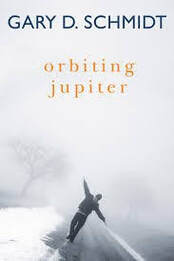
"You know how teachers are. If they get you to take out a book they love too, they're yours for life" (p.168). Every teacher will want to get this in every middle grade/high school student’s hands. I read this novel straight through, stopping only to drive to a school and guest-teach a 6th grade class (where I talked about the book and ran home to finish).
I loved every single character (except the bullies—child and adult) from Joseph who has been repeatedly hurt by others; to Jack who "has Joseph's back" almost from the beginning and counts how many times Joseph smiles while not giving up on trying to get Joseph to call him Jack, not Jackie; to Jack's parents, who are Joseph's foster parents who help Joseph to heal and become whole again; to the teachers and coach who see the positive in Joseph.
I laughed and I cried through the novel, but I keep re-writing the ending, not because it wasn't well-written, not because it wasn't realistic, but because it's not the ending I wanted.
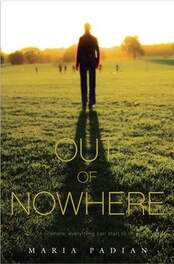
“Things get a little more complicated when you know somebody’s story.…It’s hard to fear someone, or be cruel to them, when you know their story.”
The majority of the 21.3 million refugees worldwide in 2016 were from Syria, Afghanistan and Somalia. The United States resettled 84,994 refugees. Together with immigrants, refugee children make up one in five children in the U.S. More than half the Syrian refugees who were resettled in the U.S. between October 2010 and November 2015 are under the age of 20.
Narrator Tom Bouchard is a high school senior. He is a soccer player, top of his class academically, and well-liked. He lives in Maine in a town that has become a secondary migration location for Somali refugees. These Somali students are trying to navigate high school without many benefits, including the English language. They face hostility from many of their fellow classmates and the townspeople, including the mayor; one high school teacher, at the request of students, permits only English to be spoken in her classroom.
When four Somali boys join the soccer team, turning it into a winning team, and when he is forced to complete volunteer hours at the K Street Center where he tutors a young Somali boy and works with a female Somali classmate, Tom learns at least a part of their stories. Tom fights bigotry, especially that of his girlfriend—now ex-girlfriend, but he still doesn’t comprehend the complexity of the beliefs, customs, and traditions of his new friends, and his actions have negative consequences for all involved. While trying to defend the truth, Tom learns a valuable lesson, “Truth is a difficult word. One person’s truth is another person’s falsehood. People believe what appears to be true and what they feel is true.”
Lesson Learned: Tolerance and acceptance is not enough; we all need to reach respect (for others and their cultures, beliefs, and traditions).
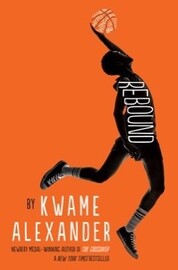
“I want to be the hero in my story.” (339) The year Charlie Bell turned twelve many good things were supposed to happen, but his father died suddenly, and Charlie began to lose his way. His dad was “a star in our neighborhood,” but on March 9, 1988, Charlie’s “star exploded.” A good kid, he starts making bad decisions—skipping school, taking part in stealing an elderly neighbor’s deposit bottles. Even his smart friend CJ, a girl who might become more than a friend, can’t keep him on track. And his life began to revolve around his comics.
Then his mother sends Charlie to spend the summer with his grandparents on their “farm.” Through his grandmother’s love and his grandfather’s work ethic, and most of all, through his cousin Roxie’s obsession with basketball, the re-named Chuck discovers a love for basketball, and he learns to “rebound on the court. And off.” (2)
I became immediately caught up in the rhythm and rhyme of the free verse, and font size, style, and spacing were effectively employed throughout the narrative. Many readers will be engaged by the graphics, comic book style, that are scattered throughout.
This was definitely a character-driven novel. I fell in love with Charlie/Chuck and all the other characters, especially granddaddy Percival Bell and cousin Roxie Bell. In fact, I would love to see a novel featuring the young Miss Bell herself.
A prequel to The Crossover—Charlie is the Crossover twins’ father—this book would serve as a companion reading, but it can stand on its own, although I am not sure that the last section, set in 2018, would make sense to those who had not read The Crossover (but, by now, I think most students have read the earlier novel, and if reading these novels in different book clubs, The Crossover club members could update the Rebound readers).
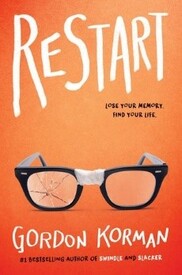
In this novel I met a new favorite character—Chase Ambrose. The eighth grade, MVP football player fell off his roof and suffered from a concussion—and amnesia. The “new” Chase is a nice guy who plays Barbies with his 4-year-old half-sister and volunteers at the senior citizens’ home.
When he returns to school, becomes a valuable member of the video club, and begins making new friends, new, improved Chase finds, to his horror, that the old Chase was not just a bully, he was the Head Bully; one boy even had to change schools to avoid him. His new video-nerd friends are some of the kids he bullied the most. After a particularly vicious prank, pulled with his best friends and fellow football team members Aaron and Bear, he was given community service as a punishment. Surprisingly his father approves of Bully Chase and is disappointed that his concussion prevents him from playing football.
As Chase navigates his “new” world, he is worried that he might slip back into old habits and that he won’t be able to convince his new friends that he really has changed. He finds that he might still have to pay for who he was and figure out who he will be able to become. I read this well-written novel straight through, worrying that it might be too late for Chase to be accepted for who he now is.
Restart is a perfect novel to begin important conversations about bullying and whether bullies can change because bullying affects all youth, not only those who are bullied, but those who bully others and those who see bullying going on. Approximately 30% of young people admit to bullying others in surveys (Bradshaw, C.P., Sawyer, A.L., & O’Brennan, L.M. (2007). Bullying and peer victimization at school: Perceptual differences between students and school staff. School Psychology Review, 36(3), 361-382,).
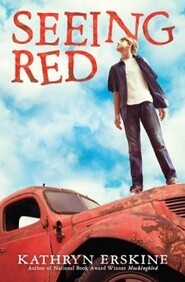
"The truth will set you free." Or so writes Miss Miller on her board.
When I studied history in school, I learned dates, events, and names. I didn’t learn the motivations, the stories, the different perspectives on the truth, and most important, I didn’t learn what changed and what still needs to change. And I didn’t learn to reflect on where I stand and how I can become an agent of change. Teachers told me what to think; in Seeing Red the main character observes, Miss Miller “tell[s] us to think!” In his first classroom encounter with this new, hippie teacher, Red says, “I mean, it’s all happened already and there’s nothing you can do about it, so it’s kind of a waste of time.” Seeing Red takes the reader back to the 1970’s where Red learns that in his town discrimination and racism is still alive and his family was more involved than he knew. Learning his history will be crucial in making things “right.”
Frederick Stewart Porter (Red), the 12-year-old main character of Kathy Erskine's novel begins with the narrator’s observation, “Folks don't understand this unless it happens to them: When your daddy dies, everything changes." and he spends the novel navigating those changes. Red knows in many instances what his father would want him to do, but he now experiences the complexities of what is right to do and how to make that happen.
Where do his rights/wants end and others’ begin. His mother needs to sell their house, shop, and store; Red wants to stay, to preserve his father’s family legacy. He has to decide how far he will go to do so. To enlist the help of the town gang, he first goes along with their initiation. If you burn a cross but don’t mean it to make a statement, does it still make a statement? What if you were just doing what you were told to do? What if your friend who is black happens to be there? What if he is tied up? And beaten?
As Red learns more about the town and his family’s history in forming that town, he thinks back to his father’s words, “Next time, you think for yourself and decide what makes you a man, a good man.” Red does. “It felt like there was nothing but change happening.”
Why do we study history? It’s all happened already and there’s nothing you can do about it, right? This novel reminds me of the Edmund Burke quote, “The only thing necessary for the triumph of evil is that good men should do nothing.” And that's one reason for our adolescents to read Seeing Red. We can encourage our adolescents to "Discover the past, understand the present, change the future."-Kathy Erskine.
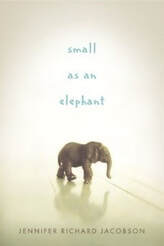
According to the National Institute for Mental Health, 9.8 million Americans aged 18 or older, or 4.2% of the adult population, are living with a serious mental illness such as schizophrenia, bipolar disorder, or major depressive disorder. Other mental illnesses that may affect parenting and child welfare include obsessive-compulsive, paranoid, psychotic, panic, and posttraumatic stress disorders. Because two-thirds of females and one-half of men afflicted with serious mental illnesses are likely to be parents, "There's a significant number of individuals with some level of emotional distress who are raising children," says Joanne Nicholson, PhD, a professor of psychiatry at Dartmouth Psychiatric Research Center in The Geisel School of Medicine at Dartmouth University.
Jack’s mother frequently spins out of control. Sometimes she is sad, sometimes she is normal and sorry about her behaviors, but more often she is “spinning”—loud and excited and full of fun, usually inappropriate. She takes Jack out of school to go to amusement parks and makes up games, but she also fights with her mother and takes away Jack’s trust of his grandmother, and Jack wishes his mother would take her medication more regularly. On a camping trip in Maine, she leaves Jack and disappears. It is up to this 11-year-old boy to find his way back to Massachusetts and, hopefully, his mother. Obsessed with elephants, Jack steals a toy elephant which becomes his good luck charm as he battles weather, a broken finger, hunger, fatigue, and evading the police, before he learns to trust a new friend who takes him to Lydia, the elephant, and to his grandmother who will help make his life safe and filled with love.
Part adventure, part confronting challenges and accepting help, this novel and its resilient character will appeal to many and raise empathy for what too many children face.
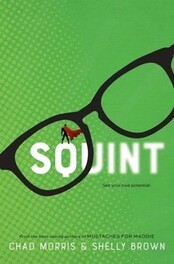
“So hit me with your best challenge for spreading kindness…. A challenge that helps people relate to people…. Share a little piece of yourself, like I did, and let us get to know and love you.” (238) These final words from Danny, a boy who suffered and died from progeria, guide Flint and McKell in their search for acceptance and belief in themselves.
Flint, nicknamed Squint because he has an eye disease that compromises his eyesight, has two goals: to win a comic book contest and make friends in middle school. McKell is a new student from a school where she had few friends. In Flint’s school she hangs out with the popular kids who bully Squint. But McKell befriends Squint, and they encourage each other, following her brother’s Danny’s video challenges, to attempt something new and follow their passions. When Squint adds a female superhero hero, Diamond, to aid his comic hero also named Squint, he supports McKell in overcoming her fear of sharing her talent. As they step out of their comfort zones, Squint confronts his bullies and finds that relationships are not always what you think they are.
This is a powerful novel about trust in others and trust in oneself and about adolescents learning to be themselves as they navigate middle school with all its rules. Comics (graphics) to go along with the story are not included, but Squint does share the text of his comic book as he creates it.
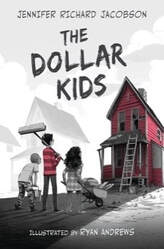
I cried because there were sad events and frustrating events, and I cried because there were happy and poignant occasions. But I also cried because the book came to an end, and, even though the author gave us a hint into the future, I didn’t want to leave Millville and its inhabitants, both old and new, especially the Dollar Kids.
I don’t know if today’s children of all ages face more challenges than those who came before them or whether, through reading, my eyes have been open to challenges that children face and have always faced. As Jacobson opened our eyes to the plight of homeless children through her memorable character Ari in Paper Things, in her new novel Dollar Kids she shows readers the effect of loss and guilt on a young adolescent.
Eleven-year-old Lowen is one of the Dollar Kids whose families move to Millville to take advantage of the dollar houses offered to deserving applicants to restore. Lowen’s family is looking for a new beginning away from the city where his young friend was a victim of a fatal shooting in a grocery store. Lowen feels loss, but he also feels guilt because didn’t he send Abe to the store to get rid of his constant questions and suggestions? This is his secret, and when Lowen, his older brother Clem, his sister Anneth, and his British mum move (father to follow) into the Albatross, their dilapidated dollar house, he struggles with this snake inside him as he also contends with making friends, competing in sports, resuming his drawing, and helping his mother make a success of her new business. As he connects with the Millville inhabitants and reconnects with his family, he learns to find peace in the unseen force.
What I appreciated is the diversity of characters, especially in age. Many authors offer us books that have characters of a particular age, and it has been said that most readers like to read about characters who are at least their age or older. While the main character Lowen is eleven, there are plenty of characters who are younger and older, and an array of both male and female characters. Even the adult characters are diverse and interesting. There are also sports, art, and music, as these characters have divergent talents as well as a range of family situations. But what they all have in common is the hope that Millville will survive, and they find it “takes a village,” working together to make that happen.
Lowen is a cartoonist who finds a place in the town as a caricaturist, and an engaging and effective feature of the novel is the graphics by Ryan Andrews. Lowen uses these comics to manage, and explore, his grief and guilt.
Growing up in a small town myself, I can appreciate the Millvillians who know everything about everyone—or so they think, bicker and compete, but can be counted on in a crisis.
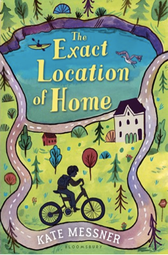
A few years ago I read an article “Give the Kid a Pencil” (Teaching Tolerance, April 4, 2016). The article focused on creating “a psychologically safe, mistake-friendly environment” for the student who always forgets a pencil. While I agree with all the author wrote, I started thinking about the student who doesn’t forget a pencil, but doesn’t have a pencil. What does one need to have a pencil? Some money—not much, but it needs to be extra money and rarely can one purchase a single pencil; transportation to get to the store; a place to safely keep the pencil; and a sharpener to be able to use the pencil for homework. Education Department statistics show 1.3 million homeless children were enrolled in U.S. schools in the 2012-2013 school year. I assume that number has risen and that many of them don’t have a pencil.
Kevin Richards and Kirby Zigonski, characters in Kate Messner’s The Exact Location of Home do not have pencils—as their teacher points out in front of their eighth grade class. Kevin and Zig are homeless. Homeless children also have less than ideal conditions to complete homework and Zig experiences his stellar grades falling.
It is crucial that teachers and their students read novels such as The Exact Location of Home to become aware of who may be sitting in front of them and who may be keeping secrets from their own friends. When the teacher berates Zig for lack of homework and pencil, he writes, “I don’t say anything.” It is also important for children experiencing poverty, homelessness, fathers who leave, or the other circumstances outlined in this novel to see themselves reflected in a book.
Besides falling grades and one pair of jeans and 4 shirts as his only available clothing, Zig has another problem—he wants to find the father who abandoned them, not only for child support to help them rent an apartment but just to talk. In his free time, he follows geocaching clues, clues he thinks his father has left for him. He finds not his father, but as Scoop says, that “Friends help” and, like electrons, he travels a path “and things work out.”
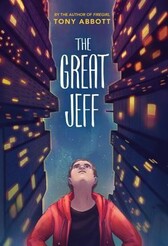
The Great Jeff is a sequel or companion book, to Abbott’s 2006 novel Firegirl, and I found it necessary to have read the first book to understand Jeff's feelings about relationships in the new novel. Firegirl left me with questions about Jeff who was not the most sympathetic character and—from his behaviors in that novel—deserved to be ditched by his best friend Tom Bender.
In this well-written, engaging novel, the reader learns more about Jeff and his family and home life, and he becomes a more sympathetic character. Jeff was nine when his father left. Dad is now living with a second girlfriend who is pregnant, and he has stopped paying for Jeff’s education at St. Catherine’s. As a result, Jeff has to change schools for eighth grade. “I still wanted to love my dad. Inside me, I still wanted to.” (65)
His mother, an alcoholic, loses her job with no savings for rent. Jeff becomes the sensible one and gives up buying his beloved comics and skips lunch every other day. They begin selling their clothing, household items, and furniture until they lose their rented house and become homeless, moving from run-down motel to a friend’s home to sleeping in their car to a shelter. “Home. Homeless. Funny how it doesn’t take much to go from one to the other.” (171)
Through it all, Jeff stays positive and becomes resilient for his mom who only infrequently behaves like a responsible adult. “She’d taken over sounding grownup now. She had to sometime.” (158) He helps her hide their situation, despite his lack of clothing and the days he smells.
In the shelter Jeff can finally open up and share his problems with other children. “[Jano’s] story was different from mine but the same too.” (199) And when his mother ends up in the hospital, Jeff learns to trust those who were always his friends.
Homeless children and teens could be hiding in plain sight in our classrooms. The federal definition of homelessness includes those who lack a “fixed, regular, and adequate nighttime residence,” sleeping on the streets or in cars, in shelters, couch surfing, or children who have run away or were kicked out of their homes. By the time homeless children reach school age, their homelessness affects their social, physical, and academic lives. The number of homeless children in public schools has doubled since before the recession, reaching a record national total of 1.36 million in the 2013-2014 school year, according to new federal data. A 2017 study found the number of students ages 13 to 17 who have experienced homelessness in the past year to be about 700,000 young people nationwide.
Novels such as The Great Jeff and those I read and reviewed for “Hiding in Plain Sight: A Different Diversity” [http://www.yawednesday.com/blog/hiding-in-plain-sight-a-different-diversity] are important for children who need to see themselves represented in a book and for those who need to learn about peers they might view as different from themselves to learn understanding and empathy. These novels are also important reads for educators.
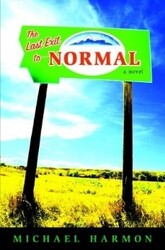
Rebelling against his father's coming out when he was 13, Ben has had continuous brushes with the law in Spokane, Washington. When Ben's father and his new spouse Edward move 17-year-old Ben from the city to a small town in Montana, Ben experiences a new type of life and new types of relationships.
Ben befriends his 11-year-old neighbor who is being abused by his father and tries to help him find the mother who ran away (as did Ben's). He is led gently into small town ways by his new girlfriend and her scary brother, and he stands up to the town bully who just may be psychotic.
The novel is written with witty humor (I found myself laughing out loud), but I found the scenes between Ben and his father nonproductive and repetitive—most likely demonstrating the author's point—until they come to an understanding. Even though Ben is 17, I see this as a coming-of-age novel as Ben lets go of his 14-year-old self and accomplishes multiple acts of heroism. The story is filled with great characters—especially Edward's mother Miss Mae.
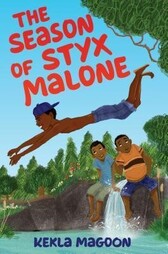
“Styx Malone didn’t believe in miracles, but he was one. Until he came along, there was nothing very special about life in Sutton, Indiana.” (1) The first page just keeps getting better until the last line seals the deal: “It all started the moment I broke the cardinal rule of the Franklin household: Leave well enough alone.” (1)
Ten-year-old narrator Caleb Franklin and his eleven year old brother Bobby Gene live in a small town, and their father does not allow them to venture out from where everyone knows them and they are “safe.” Caleb’s goal is to get to the museum in Indy. And to be extraordinary, not “extra-ordinary” as he thinks his father is calling him.
Then the brothers meet a mysterious sixteen-year-old name Styx Malone, Yes, as in Greek mythology, where the River Styx separated the world of the living from the world of the dead. Malone may not be their transport from the dead to the living, but it surely seems so. Styx is free from parental restraints and always has a plan that becomes bigger and better. “The moment felt like Saturday, like summer heat, like adventure…. It felt like the soft swish of corn tassels and being one step closer to an impossible dream …One step closer to our happy ending.” (116)
As the boys become more and more involved with Styx, providing the friendship it appears he is missing in his life, they learn that he is a foster child who has moved from home to home, family to family, and his life may not be as glamorous as it seems. “’Only person you can ever count on is yourself.’…There were lots of people I could count on…. But I got what Styx was saying: Freedom came with a price.” (154)
Many things changed the season Styx Malone “shook [their] world.” That summer did make a difference—to Styx himself and to expanding the world of the Franklins.
There were many interesting, delightful characters, including Cory Cromier, the eleven-year-old bully who loves babies and becomes a Franklin brothers’ ally, and Pixie, Styx’s magical ten-year-old foster sister. This book, with its short chapters, each ending with seductive lines. and prospective discussions of morality, ethics, responsibility, friendship, and family, would make a good read aloud for grades 5-8.
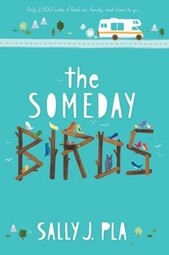
Anne Lamott wrote about writing in her book Bird by Bird—and that is exactly what Sally Pla does in her first novel. This emotional novel is written bird by bird (literally), character by character, event by event, emotion by emotion.
Charlie’s father was an English teacher and a journalist. On an assignment in Afghanistan, he sustained a brain injury and now he does not appear to be aware of his family. He has been living in a hospital where a mysterious, bossy young woman visits him daily.
Charlie, the narrator of the story, is a neuro-diverse young adolescent; he washes his hands twelve times, is obsessively organized, doesn’t like being touched, tries to distinguish emotions from visual clues, and is fixated with, and passionate about, birds. When his father is transferred from California to a hospital in Virginia for further treatment and his grandmother goes to be with him, Charlie, his younger twin brothers, and his 15-year-old boy-crazy sister, find themselves driving cross country with the stranger from the hospital room, a Bosnian woman named Ludmila.
Charlie decides that if he can find all the birds that he and his father had hoped to see— their Someday Birds—even the extinct ones, his father will be healed. Recognizing that this will at least serve to help Charlie feel better, Ludmila supports his endeavor and plans their trip around the needs of Charlie and the family. Meanwhile, along the way they learn her story and her ties to their father.
The travelers have adventures, meet people, find birds that were not even on the list, and Charlie acquires the journal of his hero—ornithologist, artist, and philosopher Tiberius Shaw, PhD, whom he hopes to meet when they arrive in Virginia—as well as a dog he names Tiberius. By the end Charlie has redefined the meaning of success and, with the reader, has learned a bit of history and geography, and a lot about birds and human nature. “Bird’s-eye views or close–up human views; the world is confusing and surprising both ways” (323).
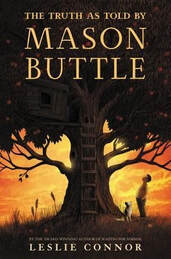
When I received a copy of this book, I wondered if I would be as captivated by Mason as I was with another Leslie Connor character, Perry Cook (All Rise for the Honorable Perry T Cook). Perry and Mason have a lot in common; they are both loyal, resilient, glass-half-full guys who persevere through challenging experiences. Mason has faced a variety of challenges. He is the largest kid in his grade, sweats uncontrollably, has trouble reading and writing; he lives with his grandmother and uncle in a house he refers to as the “crumbledown”—and then Shayleen moves in and takes over his bedroom.
Mason has suffered more than his share of losses—he had a walkaway daddy, his grandfather and mother died, and, along with most of the town, Mason is still mourning his very best friend who fell from the ladder of their tree house and died. And there are two bullies who are always after him. What Mason does have, beside an indomitable spirit, are a compassionate school social worker, a new best friend who is as loyal as Mason, a neighbor’s dog who loves him, and a supportive family.
However, what Mason doesn’t realize is that Benny died under mysterious circumstances and some people, including the lieutenant who questions him incessantly and Benny’s two fathers, think Mason may be to blame. As Calvin and Mason create their own hideaway and battle bullies, Mason inadvertently solves the crime, but he still is never one to think badly of anyone, “My heart feels scrambled” (p. 320). The truth as told by Mason Buttle is the truth.
The reader will fall in love with Mason, and even though he may begin the story wearing a T-shirt that proclaims him as “STOOPID,” he ends with the revelation that “Knowing what you love is smart.”
With very short chapters and a wealth of diverse characters, this novel would be another good teacher read-aloud.

He is very tall, somewhat irreverent, and has schizophrenia, but there is something about Adam that captivated me immediately. I had to keep reading his story. I would be washing dishes and think, “What is Adam doing now? I have to get back to him.” I even was fascinated with his hallucinations, or imaginary friends, especially Rebecca who is almost always with him and the Mob boss who can cause chaos but also can just sit quietly with an espresso and cannoli.
Adam was diagnosed in his mid-teens with schizophrenia and, at age 16, he is starting a new school and is part of a trial for a new drug. He still sees people and hears voices and thinks of himself as “crazy,” but he is now almost sure of what and who are real—most of the time. He won’t talk at his therapy sessions, and so this novel is a compilation of his weekly journals to his therapist.
Adam has a supportive mother and stepfather and during this year he falls in love with Maya, who he is pretty sure is real; makes a best friend, the pale, serious, nerdy Dwight; and gains the wrath of the school bully. He wants to keep his secret from all of them, especially Maya. “I don’t want to lose my secrets, because they keep me safe” (153).
His “corporeally-challenged” friends as he begins to think of them become supportive, and one of the funniest scenes is when his new half-sister is born. “My hallucinations…hung out behind my mom’s bed and made faces at the baby. She couldn’t see them, but I didn’t want to spoil their fun” (277).
When the drug begins to fail and his condition is revealed, Adam learns just how supportive his family and friends can be.
I always feel that the best writing has characters we don’t want to leave.
Note: A study conducted by the National Institute of Mental Health found about 1 in 5 teens in the United States suffer from a mental disorder severe enough to their impact daily activities. Schizophrenia is one of the most complex of all mental health disorders. It is a severe, chronic, and disabling disturbance of the brain that causes distorted thinking, strange feelings, and unusual behavior and use of language and words. Statistics indicate that schizophrenia affects approximately 2.4 million Americans.
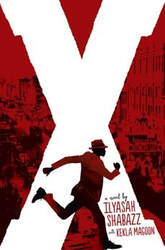
This fascinating “novel,” or fictionalized biography, of Malcolm X should have been titled “Before X” since it covers the time before Malcolm Little became Malcolm X or, as written in the Author’s Note, “[it] represents the true journey of Malcolm Little, the adolescent, on the road to becoming Malcolm X.” (352)
Written by one of his daughters, Ilyasah Shabazz, with one of my favorite writers, Kekla Magoon, author of Camo Girl, How It Went Down, and The Season of Styx Malone, X covers the years from 1931 to 1948, the year Malcolm went to prison, focusing primarily on his teen years in Boston and New York City.
The reader experiences the significant influence of Malcolm’s father, a civil rights activist, and his mother who kept the family together after his father’s death, or murder, despite severe poverty until she was taken away to a mental institution and the children were divided among foster homes. The story also demonstrates the powerful influence of a high school teacher who, despite the fact that he was a top student and president of his class, told Malcolm that he could not aspire to be a lawyer and should aim for a profession as a carpenter. Taking that advice to heart, Malcolm drops out of school and renounces his father’s principles.
The timeline fluctuates from past to present which may be a little challenging for some readers; it might help to write in Malcolm’s ages next to the dates for readers. This novel is definitely for mature readers as teen Malcolm becomes involved in drugs and sex although there are no explicit depictions.
Through this well-written and an engaging text, the reader observes the changes Malcolm undergoes as he moves from a family life in Lansing, Michigan, to the influences of big-city life in the Roxbury and Harlem jazz neighborhoods of the 1940’s; from being Malcolm Little to the first time he signed his name, on a letter to the Honorable Elijah Muhammad, Muslim leader, as Malcolm X. The extensive 6-page Author’s Note takes the reader through Malcolm’s transition, or “awakening,” during his prison experience.
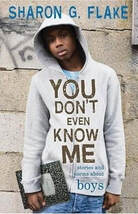
This is a collection of short stories and poetry that belongs in every high school classroom library. It is a book about boys, for boys and for the girls who want to know more about boys and how they think. The stories are very different from each other, and each will appeal to different readers. The topics are diverse: suicide, teen marriage, a grandfather who was shot, pretty mothers, HIV, and are written in a variety of formats, i.e., diary entries, letters, and poems.
Strong Boys and Girls Working Together
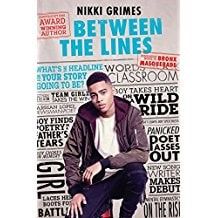
Between the Lines by Nikki Grimes
My first year of teaching, a student’s father called me and accused me of wasting his son’s time with poetry. I listened, aghast, but did not know quite what to say. I wish I had had Nikki Grimes’ novel, Between the Lines, to quote Mr. Winston, the librarian as he explains to Darrian why he should learn about all sorts of writing, even poetry. “Because poetry, more than anything else, will teach you about the power of words.” And Grimes in her newest novel, to be released in February 2018, shows us the power of words—to heal, to strengthen, to discover. Like Bronx Masquerade, this novel takes place in Mr. Ward’s English classroom where he holds Open Mike Fridays and students work towards a Poetry Slam (and where BM character Tyrone makes guest appearances).
Mr Ward’s eleventh grade class is a microcosm of the outside world—Black, Brown, and White and maybe in-between. The reader views the eight students through the lens of Darrian, a Puerto Rican student who lives with his father and has dreams of writing for The New York Times because, “Let’s face it, some of those papers have a bad habit of getting Black and Brown stories wrong.…But I figure the only way to get our stories straight is by writing them ourselves.” So Darrian joins Mr. Ward’s class to learn about words. He does learn the power of words, but he also learns about is his classmates as they learn about each other and about themselves through their narratives, their free writes, and the poetry they share.
There is Marcel, whose dad was in jail just long enough to ruin his life; Jenesis, a foster child in her 13th placement; Freddie who takes care of her niece and her own alcoholic mom; Val whose immigrant father was a professor in his native land and now works as a janitor; Li, whose Chinese parents want a strong, smart American girl; Kyle whose defective heart makes him fearless and a mentor to Angela who is afraid she is not enough, and Darrian whose mother died of cancer “half past 36.”
But these students, as the students in our classrooms, are more than their labels. As Tyrone explains abut his class the year before, “Before Open Mike, we were in our own separate little groups, thinking we were so different from each other. But when people started sharing who they were through their poetry, turned out we were more alike than we were different.” And Darrian finds out that each word can be unique and special, as Li says about poetry, but also a newspaper story “can be beautiful, especially if it’s true.” Truth is what these characters and novel reveals.
A strength of the novel is the unique voice of each character; Nikki Grimes had to write not only their stories but the unique poetry of each of these characters—boys and girls—who need to be strong in different ways. And the reader sees the growth of the characters through their interactions and poems as they discover each other and come together, sharing their strengths through poetry, the boys discovering “Hope,” and the girls telling what “We Are.”
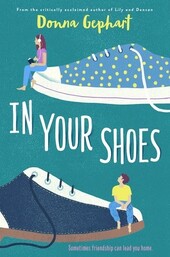
It’s difficult to write about loss—because everyone experiences loss differently, but death has become all too common, and teachers need novels to help their students deal with loss and gain empathy for their peers who are coping with grief. “1.2 million children will lose a parent to death before age 15” (Dr. Elizabeth Weller, Dir. Ohio State University Hospitals, 1991); [last year] 400,000 people under 25 suffered from the death of a loved one (National Mental Health Association). Sometimes, especially in multi-generational households, the death of a grandparent affects a child as much as the loss of a parent.
Grieving her mother’s death, Amy is torn from her best friend and her home in Chicago to live in her uncle’s funeral home in Buckington, Pennsylvania. Her father is learning the funeral trade and is away Monday to Friday, and Amy, even with her optimism, is not making new friends. Life hits a low when she sits down with girls in the middle school cafeteria—and they move to another table! But she meets a new best friend, Tate, a weight lifter with interesting fashion sense, in the school library, and they spend their lunch hours talking stories and eating Jelly Krimpets.
Meanwhile Miles is still grieving the loss of his grandmother while worrying about his grandfather dying. In fact, Miles worries about everything. His family owns Buckington Bowl, and bowling the perfect game, especially while beating his best friend Randall, is his goal.
And a bowling shoe is how Miles and Amy connect—literally, both at the beginning and the end of this delightful middle-grades novel. In addition to Randall and Tate, Amy and Miles become each other’s support system through the special bond of grief and loss.
A delightful novel by the author of Lily and Dunkin which features another strong boy-girl relationship, about the power of family and friendship. In Your Shoes features two sports uncommon for a middle-grades book: female weight-lifting and bowling. The novel also conveys the power of story—those we read and those we write.
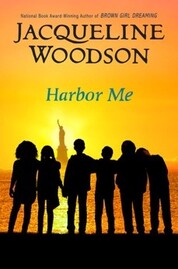
Jacqueline Woodson is one of the few authors that readers can follow from childhood picture books (The Other Side) through the upper elementary years (Locomotion), middle grades (Hush), high school (If You Come Softly), and to adulthood (Another Brooklyn), for reading fiction and memoir (Brown Girl Dreaming), in prose and in verse. In my classroom, I had Woodson novels for all “level” readers, and in other classrooms, students can grow as readers through Woodson’s novels. These books will each generate important conversations and, unlike novels by many prolific authors, they do not follow a formula. I have taken many of these characters into my heart through the years. And so, I am always excited when a new Woodson read is on the horizon and begged my way to her newest, Harbor Me.
In this novel, a group of six fifth/sixth grade special education students not only have classes together but their intuitive, empathetic teacher gives them the gift of an hour every Friday to go to another room on their own as a group, and talk with each other— the ARTT room (A Room To Talk). Over the year the six come to know each others’ stories, fears, and hopes—Esteban whose father was taken by Immigration officers; Ashton who, as the only white student in the school, is bullied; Tiago whose Puerto Rican mother becomes more quiet as she is ridiculed for speaking only Spanish; Amari who can no longer play with the toy guns he loves because, as a Black adolescent, it is not safe; Haley, the narrator whose father is in jail and mother died when she was three; and Holly, her best friend who struggles with ADHD and has to defend being “rich.”
Through their conversations and as they share more of themselves and their stories, this group becomes a family, a safe harbor for each other. “’Club Us,’ Amari said. ‘The membership requirements are kinda messed up, but whatever.’” (96) Meanwhile Haley is struggling with her father coming home from jail and her uncle, who has parented her since she was three, leaving. She reflects back on the year and what it meant to her story, “I didn’t know it would be people you barely knew becoming friends that harbored you. And dreams you didn’t even know you had—coming true. I didn’t know it would be superpowers rising up out of tragedies, and perfect moments in a nearly empty classroom.” (175)
The shifting timeline might be difficult for some readers, and they may want to keep a timeline of the events in the novel, but they will come to care for the characters and perhaps, in this story, see themselves (a Mirror) or their peers (a Window).
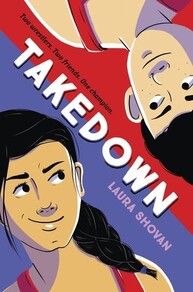
Mikayla comes from a family of wrestlers. Her two older brothers are wrestlers, and wrestling is one way she can connect with her father who moved out. In sixth grade, under her wrestling name of Mickey, she joins the Gladiators travel team after the coach of the Eagles refuses to include a girl on the team. Her best girlfriend whom she has wrestled with for years decides that wrestling is no longer for her; in fact, it may never have been. And Mickey becomes the only girl on the team where she has to prove she belongs. There she meets Lev and his friends and becomes part of the Fearsome Foursome.
Lev’s best friend Bryan knows they won’t spend much time together during wrestling season and starts pursuing other interests. But Lev comes from a sports family where they spend their weekends and holidays at matches and his sister’s field hockey games. However,he finds he is writing poetry to calm himself down and getting headaches and missing the old family dinners and cultural traditions, and now he is even questioning the sport he used to love.
When Lev and Mickey are paired at practice, he is afraid she might get in the way of his training for States. But as their friendship grows, he finds that as he stands up for her goals, his just might have changed.
As an author on a sports fiction panel once said, sports is the setting, not the story. And even though the reader learns quite a lot about wrestling and the world of adolescent wrestlers through alternating narratives by Mikayla and Lev, Laura Shovan's new novel is a story about family, friendships, resilience, and finding identity.
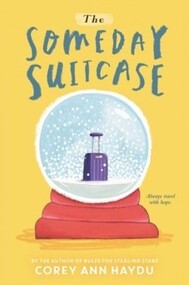
Friend. We use this word casually. Almost everyone we meet and like is identified as a “friend.” We have Facebook Friends we have never met. And it seems young teens have a new BFF every week. But in The Someday Suitcase, readers meet true best friends, friends that readers will fall in love with.
When Clover learns the word “symbiosis” in science, her favorite class [“It refers to a relationship where two organisms or creatures are benefitting from each other and surviving together.… They’re dependent on each other” (7)], she has found a word that perfectly described her friendship with Danny. Sometimes they form two halves of a whole; sometimes they are exactly the same. Clover is practical; Danny is fun. Her favorite subjects are science and math; he is better at English and social studies. When they close their eyes and play statute, they make the exact same shape. Every time. The two fifth-graders have “the world’s closest best friendship.” (2)
When Danny gets sick, really sick, Clover decides “I am going to make my science fair project all about Danny.” (54) She will use science to find out what is wrong with him, something the doctors don’t seem able to do. All they know is that when he is with Clover, he feels better. “Maybe this is who I’m meant to be—a person who makes other people feel better.” (150)
Living in Florida, the two friends have always wanted to see snow; Clover’s father, a truck driver, brings her snow globes from each trip. When Danny’s mysterious illness worsens, they buy a someday suitcase. “It’s for when we go to the snow.” (114)
With Danny missing so much school, Clover begins to make friends of her own, and the mother of one of her new friends explains that with science, there is also “room for faith and religion.” (174). When Clover and Danny set their sights on a clinic in Vermont where they think Danny can be cured (and where they can finally see snow), they experience the magic of their friendship: “Until it’s proven false, anything is possible. Even magic.” (209)
Clover is strong for Danny, but readers will realize also just how strong Danny is for Clover. This is a sweet, heartbreaking story about friendship, “a magical friendship…. Love with a twist.” (263)
Lesley is the author of Bridging the Gap: Reading Critically & Writing Meaningfully to Get to the Core; Comma Quest: The Rules They Followed. The Sentences They Saved; No More “Us” & “Them: Classroom Lessons and Activities to Promote Peer Respect; The Write to Read: Response Journals That Increase Comprehension; the just-published Talking Texts: A Teachers’ Guide to Book Clubs across the Curriculum and has contributed chapters to Young Adult Literature in a Digital World: Textual Engagement though Visual Literacy and Queer Adolescent Literature as a Complement to the English Language Arts Curriculum. She writes the “Writing to Learn” column, sharing reader response strategies across the curriculum, for AMLE Magazine and served as past editor of Connections, the award-winning journal of the Georgia Council of Teachers of English.
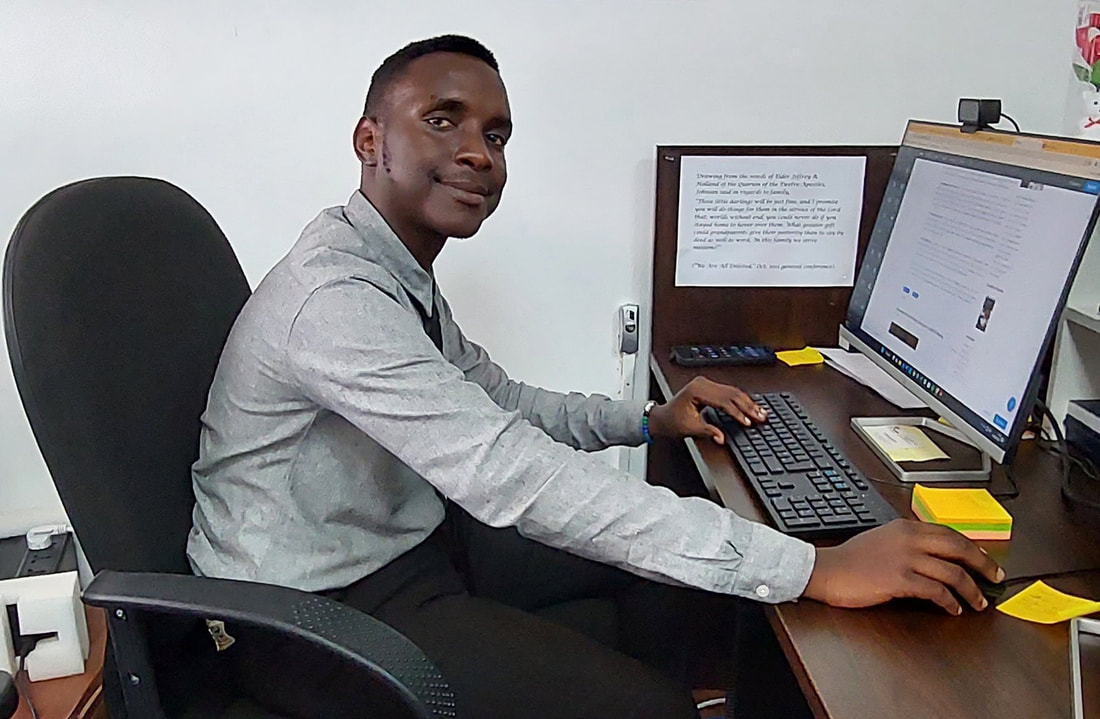
 RSS Feed
RSS Feed